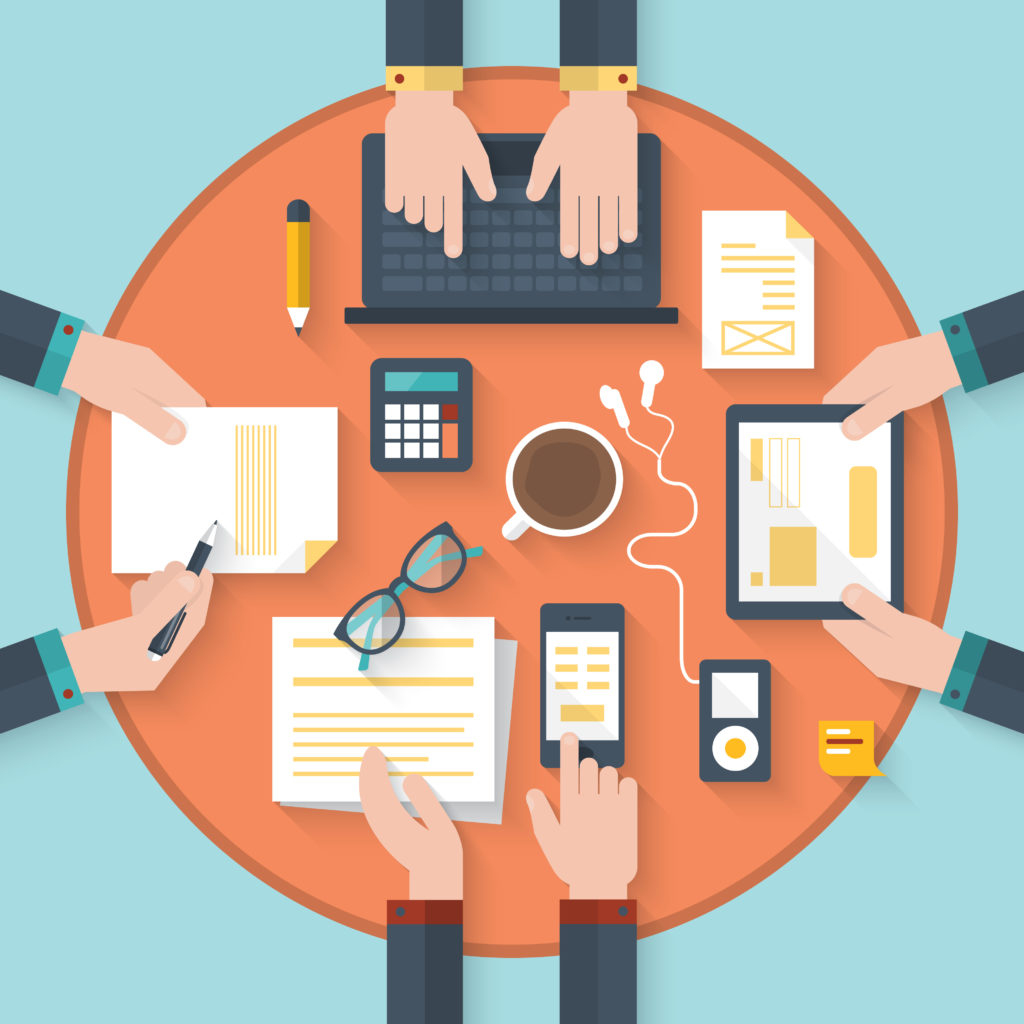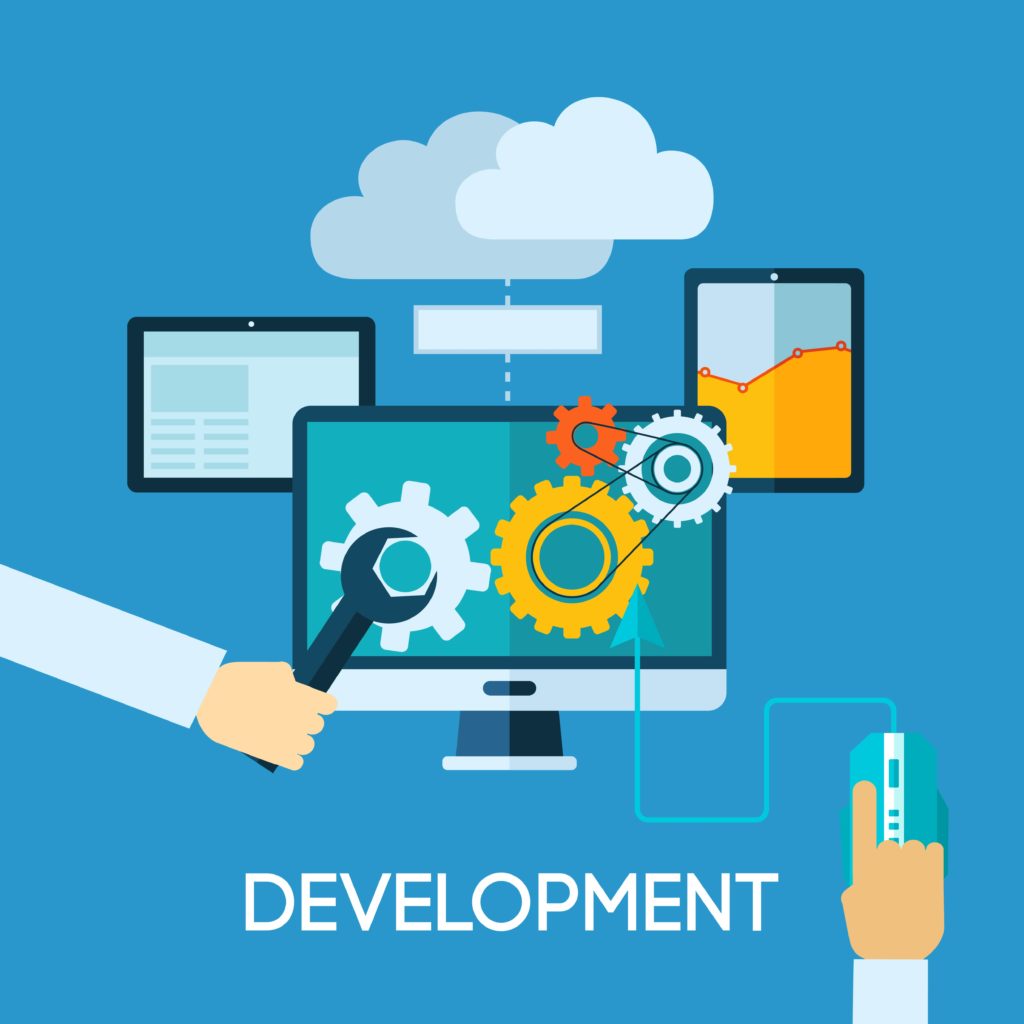While we do pretty much everything that falls under the umbrella of “digital marketing,” website design and development has been our bread and butter for years. So, it shouldn’t be surprising that we’ve been asked “how does website design work” or “what’s your design process like” thousands of times. In truth, the answer is pretty simple. We plan, design, build, and iterate. But for those of you hoping to gain a little more insight, we’ll dive into each stage below.
1. Plan

A new website shouldn’t just look better; it should perform better. You don’t want to launch a completely new site that delivers the same old experience. Your goal should be to enhance the customer experience you provide, thus improving your performance. That is why the first stage in our website design process is Discovery and Planning. In this stage, we seek to understand how your business operates. How are you getting users to your website? What tools, resources, or offerings do you have in place to convert these users? What strategies do you have in place for nurturing and closing leads? How are you engaging with customers to turn them into repeat buyers and advocates for your brand?
Some of these questions may seem unrelated to your website, but trust us when we say: they aren’t. Your website serves as the digital store front for all of your online marketing tactics. It only makes sense that your website should fit your current processes and help you reach your overall business goals.
Getting a little more granular. We kick off our website design projects the same way we kick off every project — with a little discovery.
Discovery
“Discovery” is a term we use that basically just means we want to get to know you and your business. You can take a look at some of the questions we like to ask below. What are your revenue goals? What strategies are currently in place to hit your growth objectives?
- What are your revenue goals?
- How does your site help you achieve your business goals today?
- What is your competitive advantage? Why should I buy from you versus your competition?
- How do you acquire traffic today?
- What questions do you expect site visitors to have?
- How do you want a customer to feel when they come to your site?
- What are the words to describe your brand?
These questions help us gain a better overall understanding of who you are, what you do, and what your current relationship with your website and digital marketing is today. We don’t necessarily need to know all of this information to build you a website — in fact, if we just wanted to improve the visual layer, we could get started with no information at all. However, the more we understand about your business, the better we can build a site that perfectly embodies and supports your business.
Once we’ve done some initial discovery and feel like we understand who you are, your current business processes, and what you’d like to achieve, we move into the actual research and planning phase.
Research and Planning
We could start building your website right away. In fact, that is what a lot of design companies do. If you want something quick and easy that is just going to make your website look better, you can probably find a company that will deliver for a decent price. But doesn’t that seem like a waste? Improving the visual layer certainly is important, but a site that looks better doesn’t necessarily deliver a better customer experience. And it doesn’t magically drive more traffic, convert more leads, deliver more sales and revenue, etc.
If you want your new site to perform better than your current site, you need someone to dive in and truly assess how your current site is performing and how users are engaging with it. That is why we establish current KPI’s and goal KPI’s, perform quantitative and qualitative review, and run an SEO audit as a part of our research and planning process. These things give us a good idea of where you are now and establish where you want to be.
In addition to these items, we perform:
- Competitive Assessment
- Buyer Persona Creation
- Content Mapping
- User Path Planning
- Site Map Creation
- 90-day Plan Creation
Which allow us to determine how we get from point A to point B.
As an example, our quantitative review might find that the majority of your traffic and conversions come from mobile sources. This tells us that we should build a navigation and create designs that are mobile-first.
Our SEO audit might uncover that you aren’t ranking for any keywords related to your services, which tells us we should consider writing new service page content, make sure all on-page SEO elements are optimized, and create blog content to support your service pages.
In our our user path planning, we might realize that we aren’t providing users with clear next steps once they land on a service page. Leading us to include more and stronger calls-to-actions in the new page tempaltes.
If you want your new website to deliver better results than your current site, you need to start by analyzing your current site’s performance. What does the site do well? What needs improvement? How are users interacting with the site today, etc.
When we have finished our research and planning, we’ll get together with your team to present our findings and establish a clear way forward together. We’ll make any necessary adjustments to our plan based on your feedback, and then start designing!
2. Design

On to the fun part — the actual designs! Our strategist will work with our designers to ensure that your new page templates follow the direction layed out in the plan. The strategists will help the designers determine exactly what content needs to be on the page and how that content should be ordered to best move website users through their buying journey.
Remember the buyer personas from the planning phase? We’ll use the pain points, goals, challenges, wants, needs, etc., uncovered from our buyer persona research to create designs that really speak to the users and deliver the type of experience they are looking for.
Once we have an initial layouts set, we’ll deliver the to you in the form of wireframes which are skeletal outlines of the page meant to demonstrate page structure, layout, information architecture, and user flow. These are not final designs so things like styling, color, and graphics are kept to a minimum.
We’ll present these wireframes to your team to ensure that you are on-board with the overall concept of the page. Then, using your current brand standards and visual guidelines, we’ll create a specified number of page templates that have a completely fresh look and feel.
If you don’t have great imagery or iconography, our team can organize a photoshoot for you, develop a style for graphics and iconography, or use stock photography on the website.
Once the templates are complete, we will present them to your team and give you time to review. Once you’ve provided feedback, we will make our final adjustments, share them with your team, and — upon approval — pass the designs along to our developers.
3. Build

Once the designs are approved, we’ll build you entire website out using the new templates. This includes developing any animations or motion present in the designs, migrating over existing content and assets from your old website, creating any forms, setting up notifications and confirmations for said forms, installing any plug-ins you were using or would like to use, testing the site and various screen sizes and web browsers, optimizing your website pages for SEO, checking all of the links, and performing general QA on the website. Below we’ve included a bulleted list of the big items are developers take care of during the build phase.
- Screen Size Optimizations
- Speed Testing and Optimization
- Image Optimization
- Form Creation and Routing
- Page Template Building
- Functionality Testing
- 404 Page Set-up
- Redirect Set-up
- Plug-in/Integration Recommendations
4. Launch, Report, Reiterate

Once the website is built and we have performed QA, we’ll pass it back over to your team for one final review. If everything is in order, we’ll set-up tracking on tools like Google Analytics, Google Tag Manager, Google Search Console, SEMrush, and HotJar. This set-up includes the creation of goals and events.
Now, you might think we’re done, the website is finished, so what else is there? Well, your new site may perform better than your old one, but that doesn’t mean it will be absolutely perfect. If you desire, we’ll provide ongoing reporting to your team and make recommendations for improving the site’s performance. There are often things outside of the website that can be done to help you meet your business goals as well. As a full-service digital marketing agency, we won’t limit recommendations to just the site. We can help you determine the best tactics possible for achieving your goals.
You know the stages of website design, what’s next?
If you’re looking into a new website for your company, we have a tool you might be interested in. It isn’t anything super fancy, but it can give you a baseline idea of how your current site is performing right now. It is our website grader! It will evaluate your website in areas such SEO, mobile performance, and security in just seconds, and give you an overall website grade. Just click below to get started!
If you’re interested in having someone else handle your website design, you can learn about our services here.





